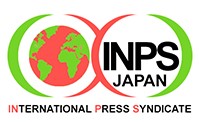As the world faces a climate emergency, the fight for environmental action and press freedom become intertwined
By Kunda Dixit
Istanbul (Nepali Times) – We are gathered here today to mark World Press Freedom Day May Third, and the Third Himal Media Mela. This year we have adopted UNESCO’s theme: ‘Press for the Planet’ to focus on the link between press freedom and environmental action.
Even as human activity globally has endangered nature, and threatened all life on the planet, journalists reporting on these issues face threats, intimidation, or are silenced by abusive trolling. In the Philippines, Brazil, Mexico and India, journalists reporting on illegal logging or mining have even been killed.
Reporters, especially those who investigate local environmental crimes and their links to bad political actors, are especially at risk. Climate deniers deploy bot armies to terrorise journalists exposing carbon emitters and and those calling for action on renewables.
It is no coincidence that the threats to environmental journalists come from the same sources which are also undermining democracy, pluralism and freedom of expression.
In our Media Mela last year we discussed democratic backsliding, the threats to press freedom, climate breakdown and conflicts. Those problems are still there, the only difference this year is that they have all got much worse.
Press freedom and the safety of journalists continues to be in danger worldwide. The Committee to Protect Journalists estimates that at least 100 Palestinian journalists have been killed in Gaza by the Israeli military since October 7 last year. That is more than all the journalists killed during six years of World War 2.
New signs of climate breakdown are everywhere. Last year’s temperature records have already been broken this year in our region and around the world. The Paris Agreement target of limiting global average temperature to 1.5 Celsius above industrial levels by 2050 has nearly been reached already, in 2024.
Nepal is seeing a wildfire and air pollution emergency never witnessed before, partly due to a severe climate-induced drought, but mostly because of government neglect and apathy.
The climate emergency and environmental threats come at a time when the mass media is itself facing an existential crisis. Media companies are struggling to survive, journalists are either not being paid in time, or are losing their jobs.

In our own region, authoritarian regimes or elected autocrats have coopted the mass media through cronies. Watchdogs have been turned into lapdogs. A weaker media is less able to independently cover the burning issues of our times.
The winds of democratic retreat and media repression are blowing our way. Nepal has one of the freest media in Asia at the moment, but we have to remain vigilant, and fully excerise our freedom to defend our freedom.
Excerpted from the Welcome Address to the Third Himal Media Mela on 3 May 2024.
INPS Japan/Nepali Times


